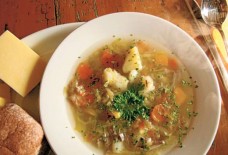Muslims in Early America
By: Cait O’Connor/Arab America Contributing Writer
Today, Muslims represent a wide diversity of the American population. A third of the community is African-American, another third is South Asian, one quarter is Arab, and the rest are from across the world. Contrary to popular belief, the majority of Arab Americans, in fact, are not Muslim.
For those who do follow Islam, however, their faith is deeply rooted in America’s foundation.
Muslims have lived in America since before the nation took on its name. Thousands of Muslims arrived centuries before the white settlers who claimed this land as their own, yet the limitations and discriminations they have faced often overshadow their foundational role in this country.
The first Muslim Americans were brought to America as slaves from West Africa, as part of the transatlantic slave trade. About 20% of enslaved Africans were Muslim. Runaway slave advertisements in early North America reveal names of Islamic origin, including Mustapha and Bullaly.
Above is a work by William Muir, one of the earliest Western scholars of Islam and “Orientalism.” Unfortunately, outside narratives like these often did more harm than good in spreading false ideas about Islam. Prayers recorded by enslaved Muslims, falsely labeled as the “Lord’s Prayer” and “Psalm 23” as a means of resistanceAs with all American slaves, very few records were kept regarding their heritage and background. Additionally, many Muslims may have concealed their religious beliefs, practicing undercover to avoid discrimination or punishment. A small population of Muslims on the coast of Georgia, however, upheld their faith in an isolated community until the early 20th century.
Muslims from the Mediterranean were referred to as “Turks” or “Moors.” This population was largely tasked with rowing Caribbean galley ships or work for Spanish overlords in towns and on plantations. In Louisiana, plantation slaveholders valued Muslim slaves for their prior experience growing indigo and rice.
In the years leading up to the Civil War, the number of Muslim slaves declined as the slave trade veered away from Muslim-majority nations.
Notable Early Muslim Americans
While this is in no way a comprehensive list, the following are some of the early Muslim Americans whose stories have been the most publicized, and most well-understood. It is important to recognize the unique contribution of every Muslim American on the foundation and traditions of this country, but decades of prejudice and discrimination have frequently made that difficult.
Estevanico, an early Muslim American pioneerEstevanico
Among the earliest recorded Muslim Americans was an enslaved Moroccan man named Estevanico. In 1528, he and his Spanish captors were shipwrecked near present-day Galveston, Texas. Raised in the Muslim stronghold of Azemmour, Estevanico had long avoided European invasion. After his village fell to Christian forces, Estevanico was given a Christian name and set off on his journey throughout the American Southwest.
Abdul Rahman Ibraham ibn Sori
In New Orleans, the most notable Muslim was Abdul Rahman Ibraham ibn Sori. A prince in his homeland of Guinea, he was reduced to a slave in the colonies. His story received wide media attention.
Omar ibn Said
A colorized photo of SaidSaid was a Muslim religious teacher and outspoken practitioner of Islam in early America. Born in Senegal, he was sold into slavery in South Carolina. He was quickly imprisoned for his beliefs, and is famous for writing in Arabic on the walls of his jail cell, undeterred by his Christian opposition. Said was a prolific writer. Among his works are an autobiography of his life and captivity (written in Arabic) and many transcriptions of Qur’anic verses and reflections on the interplay between Christianity and Islam.
Wahab
Among the earliest reported Muslims in America was a Yemeni man named Wahab who was shipwrecked on the coast of Ocracoke, an island off of North Carolina. He arrived with a ban of Arabian horses, according to popular literature. Some of them are said to roam free to this day. Referred to as “James” Wahab, he purchased land on the island and settled down. The area known as “Wahab Village” carries his legacy.
Cairo Street
In the 19th century, American Muslims were eager to gain a broader acceptance for their faith from the American public at large. This was the inspiration for the “Cairo Street” exhibit at the 1893 Chicago World’s Exhibition. A replica of the Sultan Qayt Bey mosque in Cairo was built for the exhibit, meant to expose American festival goers to the traditions of Islam. Workers and “performers” from Egypt, Morocco, and Palestine were hired to staff the exhibit. At its conclusion, however, they returned home and the mosque was torn down. The message and exposure to Islam, performative as it was, did not have quite the desired educational effect.
The first permanent mosque was built in Highland Park, Michigan, in 1921.
Check out Arab America’s blog here!









